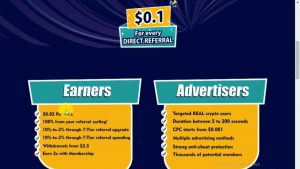In reality, product marketing is a critical part of any business marketing strategy. And without it, your product won’t achieve its maximum potential among its lead target audience. So, we’ll look at what product marketing does so you get a better idea of what I mean by this.
But, before we go into details of marketing products, your responsibilities as a product marketer may vary slightly vary at times. Based on industry, company, products, and company size and resources.
If you’re working for a startup, you may be a product marketer who also helps create the content. While the broader marketing team produces due to limited resources and budget. And as the business grows, you may move onto a team whose sole job is product marketing.
What is Product Marketing?
Product Marketing is the process of bringing a product to market, promoting it, and selling it to a customer. It involves understanding the product’s target audience. And then using strategic positioning and messaging to boost revenue and demand for the product.
In short, when we talk of product marketing, it’s a strategy where conventional marketing is all-encompassing. And that’s why it’s considered a component of conventional marketing. In fact, if you look at the seven Ps of marketing, you’ll see it is one of the most important aspects of a business’s marketing efforts.
By all means, product marketing is focused on driving demand for and adoption of a product among existing customers. It’s focused on the steps people take to purchase your product. And in that case, product marketers can build campaigns to support this work.
Related Topic: What Is Ecommerce Marketing? How to create lead prospects
Eventually, product marketing is all about understanding a specific product’s audience on a deep level. And then developing that product’s positioning and messaging to appeal to that audience.
It covers the launch and execution side of a product in addition to the marketing strategy for the product. And this is why the work of a product marketer lies at the center of a business’s marketing, sales, and product teams.
On the other hand, conventional marketing is focused on broader topics under the umbrella of marketing. Such as lead generation, SEO, and anything related to acquiring and converting new leads and customers.
It’s about promoting the company and brand as a whole, including the products that are sold. These marketers make sure there’s a consistent, on-brand message behind all of the company’s content.
The Key Responsibilities for Product Marketing
According to CEB Global, 58% of consumers have tried a new brand in the last three months that they didn’t even know about a year ago. And while it takes an entire marketing team to bring new customers in, product marketers have one of the biggest roles to play.
Product marketers have typically been found primarily in the B2B industry. But B2C industries have recently increased the number of hires for this particular role, as best practices for B2B and B2C marketing continue to collide.
Related Topic: What Skills do I need to be a Product Marketer?
Generally, product marketers start as product marketing specialists. Moving up to product marketing manager, then senior marketing manager, and finally to the director of product marketing or strategy.
But, many companies skip the specialist role altogether. Starting with the manager role and promoting from other marketing roles within the company. Their Key responsibilities in a product marketing campaign for business is to;
- Understand your customers better.
- Target your buyer personas effectively.
- Learn about your competitors (products and marketing tactics).
- Ensure the marketing, product, and sales teams are all on the same page.
- Position the product appropriately in the market.
- Boost revenue and improve sales.
There are also questions you, as a product marketer, will have to ask yourself and reflect on in regards to your product. Asking yourself these questions will help you ensure your product is a success among customers.
These questions include;
- Is this product suitable for today’s market?
- Is this product appropriate for our customers today?
- How is this product unique from similar products of our competitors?
- Is there a way to further differentiate this product from those of our competitor’s?
- Are there any products we’ve sold in the past that we wouldn’t market or sell ever again now that we look back? Is so, why not?
As you can see, product marketing requires you to look at your products from a strategic perspective. While ensuring they’re successful among customers in your current market.
Which is the Best Strategy for Product Marketing?
Your product marketing strategy serves to guide the positioning, pricing, and promotion of your new product.
It helps you take your product from development to launch. While informing you what new audience(s) and markets to which you can launch and market your product. Now, let’s take a look at five steps that can help you optimize your product marketing strategy.
1. Define your product’s target audience and buyer personas
As mentioned, one of the main roles you have as a product marketer is to define a specific target audience and create buyer personas for the specific product being sold (different products will likely have different target audiences). This the first step to marketing your product.
By understanding your customers and their needs, challenges, and pain points, you’ll be able to ensure all aspects of your product marketing strategy are tailored to that target customer and persona. This way, the product and the marketing content that’s created for the product will resonate with your audience.
2. Determine the positioning and messaging to set your product apart
After performing your customer research and learning about your audience, you’ll have identified their needs, challenges, and pain points. From here, you can think about how to highlight the ways your product resolves those challenges for your customers.
However, that doesn’t necessarily mean you’ve differentiated yourself from your competitors. After all, they are your competitors because they solve the needs of your customers in a similar way to your company.
The key to setting your product apart is positioning and messaging. Positioning and messaging answers key questions your customers might have about your product. As well as what makes it unique. And then turns those answers into the main points behind your product’s marketing strategy.
It’s your job as the product marketer to ensure your customers and audience know the answers to these questions. And that they don’t have to dig around for (or make assumptions about) them. There are examples of questions you’ll need to answer to develop your product’s positioning and messaging
Such questions include:
- What specifically makes our product unique?
- Why is our product better than our competitors’?
- Why are our product’s features ideal for our target audience?
- What will our customers get out of our product that they cannot get from our competitors’ products?
- Why should our customers trust and invest in us and our product?
Once you’ve answered these questions, you can compile these responses into one, impactful, and shareable statement. One that captures your positioning and messaging as a whole.
To do this, follow these steps:
- Turn the answers to the positioning and messaging questions into an elevator pitch.
- Use action words to excite your customers.
- Ensure the tone of your statement captures the tone of your brand.
- Focus on the benefit of your product as a whole (not just one specific feature).
And if you need more guidance, check out the HubSpot Marketing Hub product page.
The main positioning and messaging statement read as follows: “All-in-One Inbound Marketing Software: Everything you need to launch effective marketing campaigns that make people interested in your business and happy to be your customer.”
A Powerful Tip:
As a product marketer, you should ensure the sales, product, and (the broader) marketing teams are also aware of your positioning and messaging around the product. So that they too can communicate the same information to prospects and current customers.
This allows you to ensure the entire company is consistent in the content and information they share about your product. Additionally, you can provide this information to your support team if you think it’s necessary.
As they may be fielding support calls and working with your customers who’ve already invested in the product.
3. Set goals for your product
Next, you’ll want to set goals for your product.
These will vary based on your specific product, the type of company you work for, your overall marketing goals, and more. Keeping in mind, your goals will be specific to your business and situation. However, let’s review some common goals product marketers aim to achieve:
Product marketers aim to:
- Increase revenue
- Engage with customers
- Improve market share
- Gain customers from competitors
- Boost brand recognition
A Powerful Tip:
Feel free to combine several of these goals or just choose one to focus on. Every company and product will have different goals.
The key is making sure you view and set these targets in the SMART goal format. Meaning that they’re specific, measurable, attainable, realistic, and time-bound. And as such, you can use a free template to help you create and achieve your SMART goals.
4. Price your product
As a product marketer, you’ll also have to contribute to the discussion of the price of your product. Depending on the company you work for, you might work with other teams on this part of the strategy.
Sometimes, it might be a job just for you and your fellow product marketers. Either way, you can consider competitive vs. value-based pricing.
Competitive Product Pricing
Competitive pricing means you’re basing your product’s price off of the similar products your competitors sell. It’s ideal for companies who have created a product similar to one that several other companies sell.
If you believe your unique features warrant a significantly higher price than those of your competitors’, you might choose to price your product above the other similar products on the market.
A good way to evaluate the fairness of the pricing of all of your competitors is by studying financial reports and industry trends.
Value-Based Product Pricing
Value-based pricing allows you to maximize your profit, although it’s a bit more time-consuming to establish in comparison to competitive pricing. It’s ideal for companies selling a product with very few competitors on the market or one with exceptionally new and unique features.
Value-based pricing quantifies your item’s value in a way your customer can relate to their profitability. It allows you to base your product’s price on its value for your customer rather than whatever the market, industry trends, and competitors say.
5. Launch your product
Now it’s time for the most important part of your role as a product marketer. Not to mention, the most exciting: — the launch of the product you’ve been marketing.
There are two main parts to the launch to focus on as a product marketer. The internal launch (what goes on within your company upon product launch). And the external launch (what goes on outside of your company, with customers and audience members, upon product launch).
Internal Aspects of a Product Launch
As previously stated, your job as a product marketer entails making sure the entire organization is on the same page about your product.
This way, your customers only receive consistent and accurate details about the product. The marketing, product, and sales teams at your company should be aware of the following information.
The should be aware of:
- The product’s benefits
- Any available product demo information
- Sales training opportunities on your product and details about how it’s used
- What the positioning and messaging looks like
- Who your buyer personas and ideal customers are
- What the goals for your product include
- What your product’s features are
- The pricing of your product
- How your product is being launched to customers (which we’ll discuss momentarily)
Now, you might be wondering how to provide this information to marketing, product, and sales. Which channels are ideal for sharing these details with your fellow employees?
Here are a few examples of ways to do this:
- Sales enablement kit (ideal for sales)
- Presentation (ideal for the broader marketing department and product)
- Knowledge base (ideal for support)
External Aspects of a Product Launch
Externally, there are many ways to market your product launch.
So that your current base of customers, prospects, and target audience learn about whatever it is you’re selling. First, determine where you’re going to focus your product marketing efforts.
Below are some examples of channels and places to do this. Whereby, you might choose several of these or just one to focus on. Depending on your needs, goals, and resources.
Channels and places to do this include:
- Social media
- In-store
- Product launch event
- Blog
- Website landing page
- Exclusive product preview (prior to the official launch)
- Promotional event/ campaign (in-person and/ or online)
On whatever channel you choose to focus your product launch marketing efforts, you should include relevant product information. You should focus on your positioning and messaging so prospects and customers can learn all about your product and why they need it.
This includes your;
- product’s features,
- what makes it unique,
- pricing,
- demos for customers,
- training for customers,
- and any other materials you’ve created and want to share.
Well, Congrats!
You’ve just worked through the steps to marketing a product. Always remember, this process is one that should be thought about always. And then constantly updated as your products change and evolve.
By so doing, you’ll make sure that your products remain relevant among your customers. Of course, this shouldn’t be an issue as long as you have a member of your team focused on product marketing. In that case, considering it’s one of the main responsibilities of marketers.
How do I get into Product Marketing?
Well, well, “how do I get into product marketing?” That’s a question I see almost every single week, and it’s no surprise.
According to Google Trends, product marketing searches have doubled over the past 12-months. Not to mention, at the time of this article publication, there are well-over 22,000 jobs within product marketing according to job site Glassdoor.
And yet, even though there is a lot written about the importance of product marketing, it still remains a mystery to many looking to make the transition into a product marketing role.
Resourceful Site: Glassdoor Job Search | Find the job that fits your life
The responsibilities of a product marketing role can vary by company and industry. More often, you’ll find this role in many B2B companies. Particularly, those that are in a competitive market with a sales team.
Product marketing is a prevalent role throughout technology companies but also exists across other industries as well. And in order to understand how to get your first job in product marketing, it’s important to first briefly cover what product marketers do.
Every company will differ a little bit on the responsibilities of product marketing. But, fundamentally product marketers are responsible for three things as elaborated in this article.
Takeaway,
In simple terms, product marketing is the process through which a company brings its product to market. Being a product marketer (or product marketing manager) means you’re at the center of your company’s marketing, sales, and product teams.
Meaning, you’re an integral part of the success of your product. Simply, because you’ll create and manage your product’s specific marketing strategy. More so, you also serve as a liaison between all three of these departments.
This helps you ensure that everyone is on the same page with your product, it’s features, capabilities, and more. So, go ahead and start developing your latest product’s marketing strategy today. And then ensure it’s a success among your target audience and customers.
Finally, if you’ll need more help on this or even other of our blog articles, please feel free to Contact Us. You can also share your additional thoughts in the comments section. Also, don’t forget to donate in order to support our research work and other projects here.






